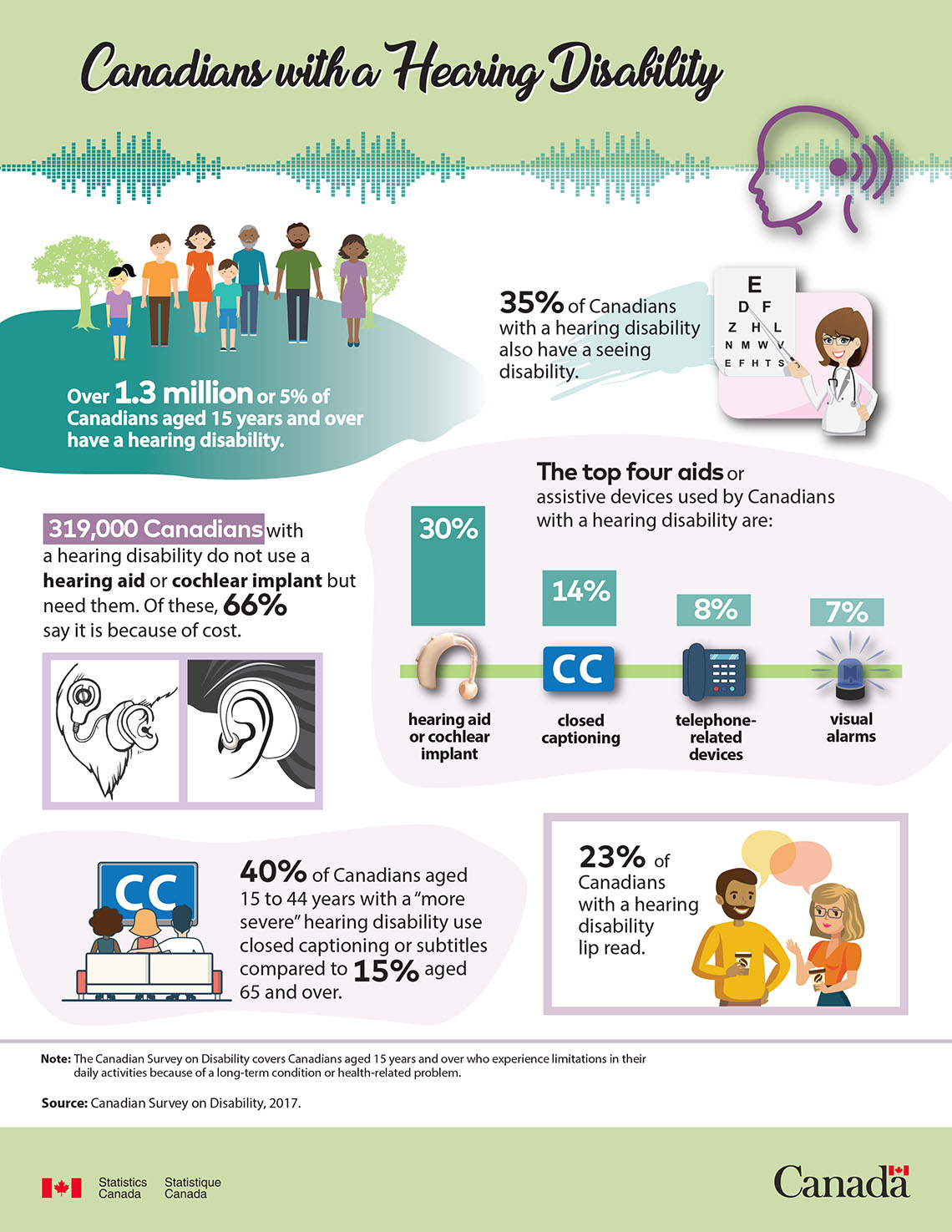8 Research Background
Wanqing Liu
Why This Topic?
“It is a common misconception amongst normal hearing adults that those who identify as deaf or hard-of-hearing do not participate in music listening or do not enjoy music. “(Watkins, 2017)
This misconception may be due to an absence of information or education surrounding the subject of music and the deaf community. As compared with research on the improvement of speech and aural skills in deaf or hard-of-hearing individuals, there is little to no research on the attitude toward music from the deaf perspective. In fact, many d/Deaf and hard-of-hearing individuals are interested in music-related activities, including but not limited to music listening, playing instruments, attending music performance and dancing.

Pic 1 Canadians with Hearing Disability - Statistics Canada, (2019)
According to Statistics Canada, over 1.3 million or 5% of Canadians aged 15 years and over have a hearing disability, which shows that there are many potential audiences for this topic.
However, what have been done is far from enough. Most music platforms haven’t paid enough attention to the inclusiveness for hearing-impaired users. And the common existing way to help them listen to music is specially-made hearing aids, but it is too expensive for most people to afford, and doesn’t work well in live music performance.
Knowledge Gaps
- Lack of understanding of the d/Deaf and hard of hearing individuals’ preferences
- Lack of research focusing on the perceptual and cognitive perspectives of translating music into multi-sensory format (some ways translating music into other senses like visual displays may be inaccurate and confusing for the audiences)
- Little research has specifically addressed the question of how to optimise the musical experience for the d/Deaf and hard of hearing (Nanayakkara et al. ,2013)
Problem Statement
Music is important physically, emotionally, intellectually, socially, and spiritually for everyone (Petress, 2005) and hearing impairment can prevent people from enjoying music, but the question of how to optimize the d/Deaf and hard of hearing individuals’ musical experience didn’t aroused enough attention.
References
Watkins, C. S. (2017). The deaf perspective: A content analysis study to determine deaf and hard-of-hearing individuals’ perceptions and attitudes towards music (Order No. 10641127). Available from ProQuest Dissertations & Theses Global. (2018301500). Retrieved from http://myaccess.library.utoronto.ca/login?url=https://search-proquest-com.myaccess.library.utoronto.ca/docview/2018301500?accountid=14771
Statistics Canada (2019). Canadians with a Hearing Disability. Statistics Canada Catalogue no. 11-627-M. Ottawa. Version updated May 2019. Ottawa. Retrieved from https://www150.statcan.gc.ca/n1/pub/11-627-m/11-627-m2019025-eng.htm
Nanayakkara, S., Wyse, L., Ong, S. H., & Taylor, E. (2013). Enhancing Musical Experience for the Hearing-Impaired Using Visual and Haptic Displays. Human-Computer Interaction, 28(2), 115–160. https://doi.org/10.1080/07370024.2012.697006
Petress, K. (2005). The Importance of Music Education. Education, 126(1).

